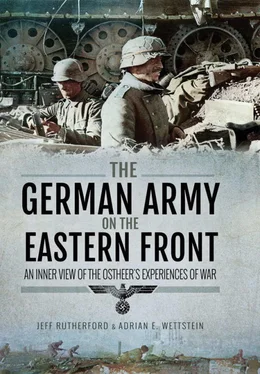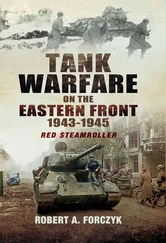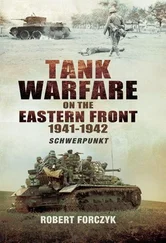After reaching Vilna on 26.6., Army Group Centre ordered a thrust on the high ground near Minsk to encircle the retreating troops in front of Fourth and Ninth Armies and to make a connection with Panzer Group 2.
Panzer Group 3, still believing that elements of the enemy pulled back to the east and that it was necessary to pursue them over the Dvina, once again tried to plead its point of view to the OKH through the OKH liaison officer. OKH, however, maintained its conviction for the objective for Panzer Group 3 from the deployment directive: to reach the heights of Minsk.
Once the connection was made with Panzer Group 2, Panzer Group 3 decided to start the advance on the Dvina with the bulk of the group. In contact with Ninth Army and Panzer Group 2, two divisions should have continued to block against the encircled enemy by Minsk. In contrast to Army Group Centre, Panzer Group 3 believed this was acting properly because it no longer attached any combat value to the encircled enemy and therefore the larger goal lay on the Dvina. Waiting until the last Russian had surrendered was not permissible, especially since the encircled enemy seemed to escape to the southeast through the gaps of Panzer Group 2 from 30.6. on.
The intention of Panzer Group 3 was to drive on to the upper Dvina from 2.7. without further delay. It was expected that the enemy would defend the Berezina and Dvina River sectors with resistance groups of reserves and elements of soldiers broken out of the encirclements, without depth and a coherent front, but they has already been shattered through the drive of Panzer Group 2 at Bobruisk and Panzer Group 4 by Dvinsk.
As the report notes, the war experienced by German units at the sharp end was costly during the opening days of the invasion. Despite the surprise achieved along the breadth of the front, and the tremendous numbers of prisoners taken, Soviet forces resisted tenaciously in various places and the casualties of German units involved in the initial battles were among the highest in the war. [9]More importantly, the document highlights the central issue between the various Army Group, Army, and Panzer Group commanders concerning the use of armour. For the generals commanding infantry armies, the encircled enemy forces to their front needed to be eliminated and this could only be accomplished by the Panzer Groups not merely closing the trap, but also turning the vice and driving Red Army troops into the cauldron created by the eastward marching infantry. For the panzer generals, however, what mattered was utilizing the speed and mobility of the Panzer Groups to the utmost; instead of wasting them in relatively static engagements against an already encircled foe, they wanted to leave a minimum of force to maintain the encirclement and put the remainder of their units on the road to the east to forestall the formation of any form of coherent Soviet defence. Such visions of deep Panzer thrusts to the east, however, failed to correspond to the realities of the Germans’ already creaking logistic system, as well as the much slower speed of the infantry armies that were essential to both occupying Soviet territory and destroying the cauldrons created by the Panzer Groups. In the example given here, Army Group Centre sided with the infantry generals and ordered Panzer Group 3 to close the encirclement of Soviet troops at Minsk with Panzer Group 2. This led to one of the most noteworthy successes of the campaign: the twin encirclement battles of Bialystok-Minsk in which some 324,000 Soviet soldiers were taken prisoner and more than 5,100 tanks and artillery pieces were wiped out of the Red Army’s order of battle. [10]The employment of German armour thus led to spectacular battlefield victories, but the Soviet Union’s very geography presented the Germans with stiff challenges to their preferred method of war.
The German army soon found that the Soviet theatre did not lend itself to the type of armoured warfare that had worked so spectacularly in France. One of the primary issues in the east was the lack of suitable roads. While this was a problem across the breadth of the front, it proved to be an especially intractable one for units operating in Army Group North, as its area of deployment was peppered with swamps and bogs. The following excerpts from the 8th Panzer Division’s war diary highlight this obstacle to a blitz-type campaign. [11]
6.7.41: In addition to numerous smaller corduroy roads, an especially long corduroy road was built along the east bank [of the Ludza] that required some three to four thousand tree trunks that were cut down by the engineers from the outlying forests, had all the branches cut off, were cut into pieces, transported to the departure point and since they needed to be driven to the work site, were put on trucks that had been captured on the east bank and made drivable. Since the forest terrain was swampy, the engineers stood with water over their waists most of the time while dragging around the trunks. […]
19.10.41: The extraordinarily difficult road conditions, the swampy terrain, with no room for the tactical manoeuvre of vehicles, and the slow movement of troops over the Volkhov bridges make only a very gradual advance of forces possible. Mine and tree obstacles allow for only a dismounted advance. All available forces must be deployed for road construction. […]
31.10.41: The moors under the snow covering are only frozen a little bit and after each passing of only a few tanks, the road is completely impassable. […]
Unlike France and its well-maintained and relatively dense road network, the Soviet Union’s nearly non-existent system of roads precipitously slowed German armour and motorized divisions, frequently forcing them to wait for engineers to construct makeshift roads and bridges along the routes of advance. [12]The document also hints at the mounting tasks for soldiers, who were not only expected to fight the Red Army while advancing, but also found themselves labouring to make the advance possible.
Partially a result of these poor roads, but also due to stiff Soviet resistance, German armour divisions suffered heavy material losses during the opening months of the invasion. The following war diary entry from the XXXXVIIth Panzer Corps paints a troubling picture of those units that the success of the entire operation depended on. [13]
The following numbers are symptomatic of the present strength of the 18th Panzer Division:
From an authorized strength = 42 3.7cm and 9 5cm anti-tank guns are as of now 22 3.7cm and 8 5cm anti-tank guns combat-ready guns available. The 52nd Rifle Regiment alone has altogether 1,000 casualties from a combat strength of 2,359 men on 22.6.41, and what has to be considered here is that the disproportionally largest share of the casualties fall upon the dismounted elements that fight the battle. The division now has only 47 battle-worthy tanks against the 276 it had on 22.6. In addition, the division has a total loss of 1,300 vehicles. A further 1,000 vehicles are under repair, of which 500 can again be made operational. The French vehicles, with which the 18th Panzer Division is predominantly equipped, have proven to be cumbersome and therefore of limited use off-road.
The dramatic decrease in operational tanks significantly damaged the 18th Panzer Division’s striking power, but the loss of vehicles should not be overlooked. Without the necessary trucks, cars, and motorcycles, the mobility of the division as a whole greatly suffered, as did its ability to bring much-needed supplies of food, ammunition and fuel to the front, an issue further discussed in chapter 4. So, even during the summer months when the Germans enjoyed some of their most spectacular successes of the war, the chances of German victory became increasingly fleeting as the panzer divisions’ combat power slowly dissipated.
Читать дальше






![John Stieber - Against the Odds - Survival on the Russian Front 1944-1945 [2nd Edition]](/books/405234/john-stieber-against-the-odds-survival-on-the-russian-front-1944-1945-2nd-edition-thumb.webp)





